Scope of Test
Determine if UVA lamp light energy (mW/cm2 or Joules) diminishes as temperature continues to rise outside the optimal operating parameters. According to most UV lamp manufacturers the optimal operating temperature for UVA lamps is 108ºF. At 120ºF it will diminish by 20% and at 140ºF it will diminish by 30%. This is due to the fact that mercury begins to change from a liquid to a gas and begins to self-absorb, which changes its color spectrum from UV to white light dropping the energy output. This test was conducted to confirm the adverse affects of excess lamp temperature.
Equipment, Material and Measurement Devices Used
- G&J Flex-in-One 260
- Kuhnast UVA Light Meter
- Stop watch
Process Description
- Measured UVA output in 30 second increments for 10 minutes as temperature changed/raised.
- Set min and max temperature settings to allow lamp temperature to increase beyond recommended values and then decrease to see impact on UVA energy output.
Data and Results
Baseline (Standard Max Set Point of 113°F):
At recommended equipment lamp temperature with minimal difference between min and max set points (min 104ºF / max113ºF) the UVA lamp energy output varied by 6.4% after initial warm-up of 1 minute.
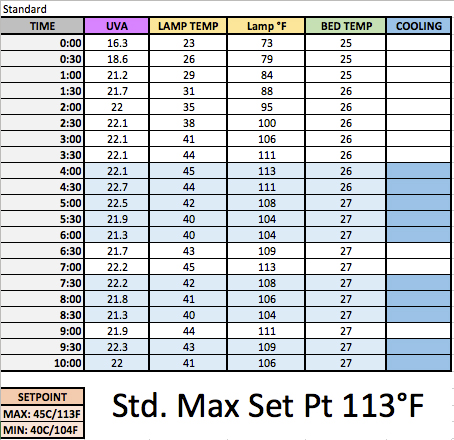
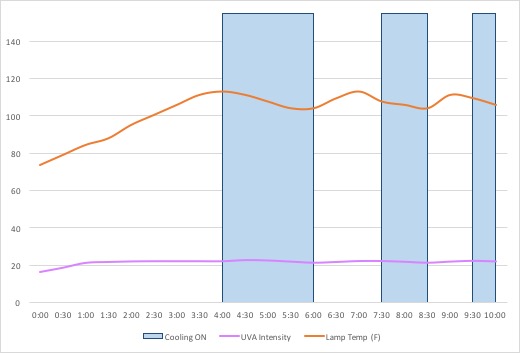
Max Set Point of 131°F:
With min set point of 104ºF and max set point of 131°F, the UVA lamp energy output varied by 7.5% after initial warm-up of 30 seconds. At a peak of 131ºF UVA energy output dropped to 20.9 mW/cm2, which is 4.9% below the average measurement within this range.
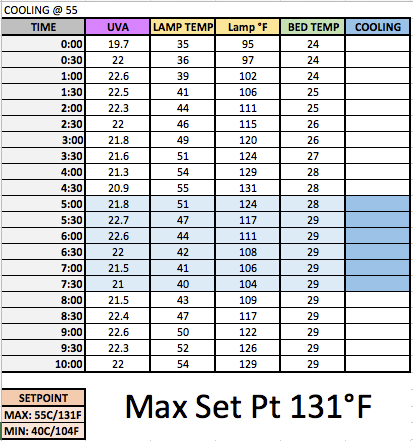
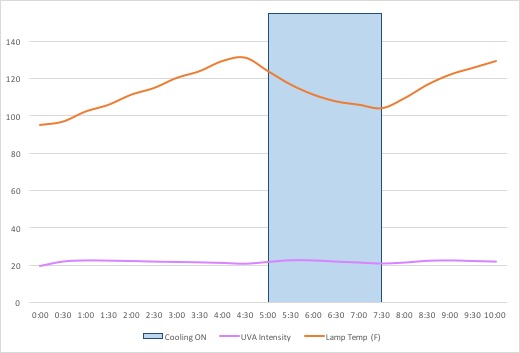
Max Set Point of 149°F:
With min set point of 122ºF and max set point of 149ºF, the UVA lamp energy output varied by 15% after initial warm-up of 30 seconds. At a peak of 149°F UVA energy output dropped to 19.3 mW/cm2, which is 9.5% below the average measurement within this range.
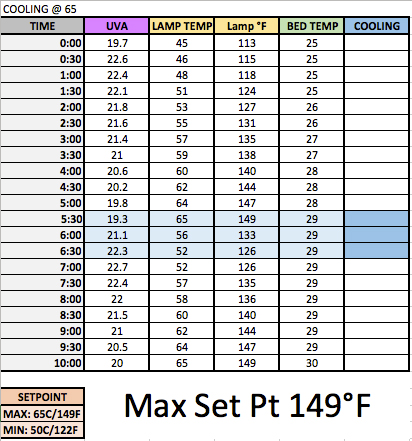
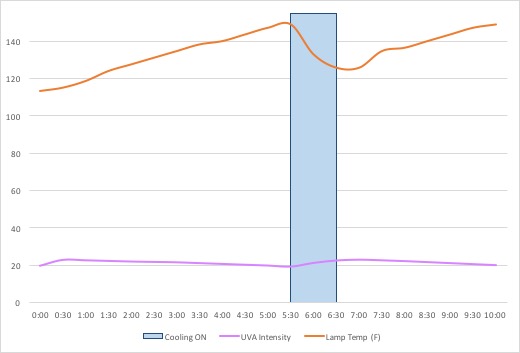
Max Set Point of 149°F and Lower Min Set Point:
With min set point of 113°F and max set point of 149°F, the UVA lamp energy output varied by 15% after initial warm-up of 30 seconds. At 145ºF the UVA energy output dropped to 19.4 mW/cm2, which is 10% below the average measurement within this range.
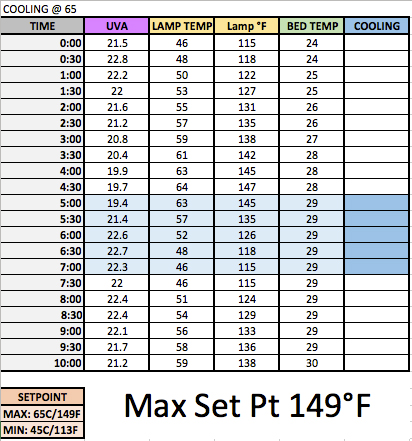
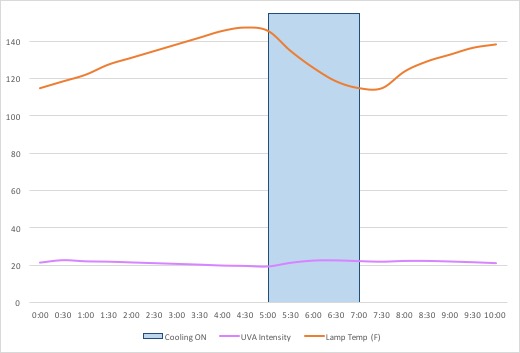 Max Set Point of 149°F and Min Set Point of 113°F.
Max Set Point of 149°F and Min Set Point of 113°F.Summary:
While results do not support lamp manufacturers comments that at 120°F UVA energy output will diminish by 20% and at 140°F it will diminish by 30%, there is a clear correlation between temperature increases and decreasing UVA energy output. Extended times at a higher temperatures may further diminish UVA energy output beyond what our test measured. Keep in mind that our lamps averaged nearly 22 mW/cm2. So while a 15% drop may not be detrimental, it would become much more critical if the users lamps had already dimished to 18 mW/cm2 or less. In this case, excess temperatures would cause the lamps to drop to 15 mW/cm2, which is significantly below minimum energy output requirements for some screening solutions (i.e. Esko HD Flexo).
APR Technical Solutions Group
We formed our Technical Solutions Group (TSG) to encompass our full range of expertise in all critical areas of the flexo process. This team is made up of industry professionals who are dedicated to being up to date on new technologies, armed with the latest in diagnostic tools, and experienced in problem solving that can achieve sustainable results. All of the TSG team members are FIRST Level III certified. CJ Marriner has over 14 years experience in narrow to wide web flexo. CJ joined APR 12 years ago with his primary focus being on equipment optimization and service.
